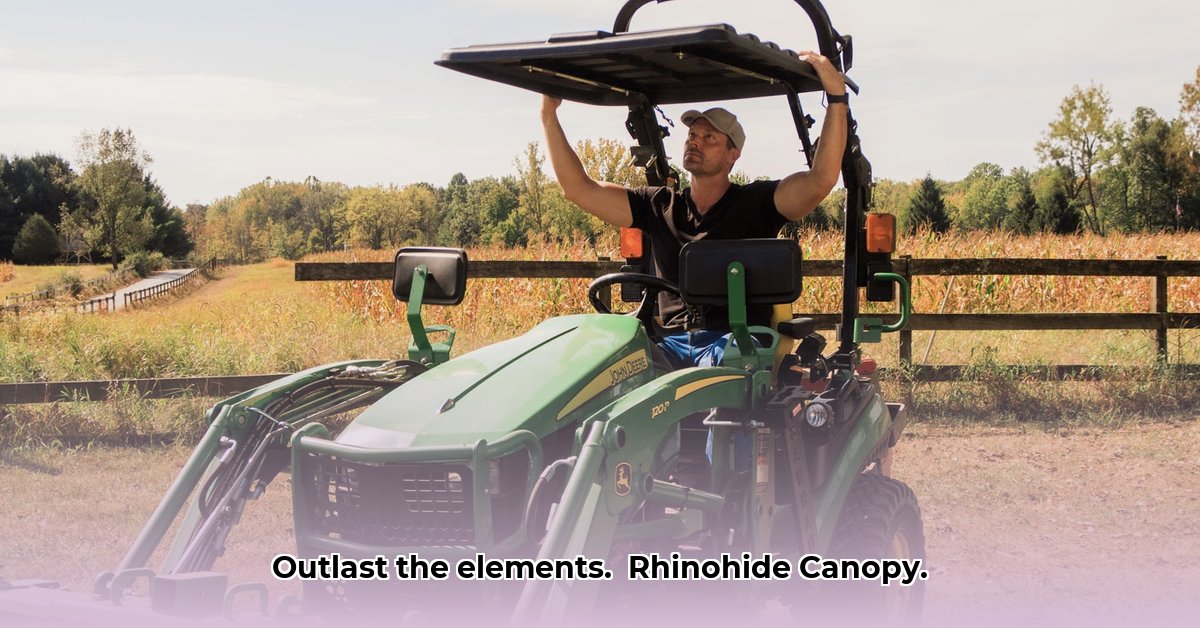
Choosing the right equipment for sustainable farming requires careful consideration of both durability and environmental impact. The Rhinohide tractor canopy, constructed from high-density polyethylene (HDPE), promises a long lifespan and American manufacturing. This article assesses its claims, highlighting strengths and significant areas needing improvement for a truly comprehensive sustainability evaluation.
Durability and Functionality: A Lightweight Champion
The Rhinohide canopy stands out for its lightweight design, weighing only 13 pounds. This is attributed to its HDPE construction, a material known for its strength and resilience. Its low weight makes installation and removal straightforward, offering flexibility for farmers who might use it across multiple tractors or need to store it during periods of inactivity. The manufacturer reports a zero-replacement rate to date, suggesting exceptional longevity. However, this anecdotal evidence needs to be supported by more robust data. Does this lightweight design truly translate to a reduced environmental impact throughout the canopy’s entire lifecycle?
Sustainability Claims and the Need for Transparency
The canopy's "Made in the USA" label suggests economic sustainability by supporting domestic jobs and potentially reducing transportation emissions. However, true environmental sustainability needs a far more comprehensive assessment. Critically, a full lifecycle assessment (LCA) is missing. An LCA evaluates the environmental impact across the entire product lifecycle, from raw material extraction to end-of-life disposal. Without this assessment, we cannot definitively assess the canopy's environmental footprint.
What aspects remain unclear? A comprehensive LCA would illuminate the environmental cost of HDPE production, manufacturing energy consumption, and the impact of disposal or recycling. Transparency regarding the origin of the HDPE and manufacturing processes, including any emissions, is also essential. Without this information, claims of sustainability remain unsubstantiated assertions. We need to understand if the raw materials come from sustainable sources and if the manufacturing process is environmentally sound.
Comparing Alternatives: A Lack of Objective Data
Currently, comparing the Rhinohide canopy to alternatives—such as metal or canvas canopies—is difficult due to a lack of independent data. To make informed decisions, farmers need objective comparisons considering factors like lifespan, material usage, and repair costs. Further research is needed to provide this critical information.
Conclusion: Durability Outweighs Uncertain Sustainability
The Rhinohide tractor canopy demonstrates promising durability and ease of use, features attractive to farmers seeking long-lasting equipment. However, the absence of a comprehensive LCA and transparency regarding material sourcing and production significantly limit our ability to assess its true environmental sustainability. The "Made in the USA" aspect positively impacts economic sustainability but does not inherently guarantee environmental friendliness. More complete data is needed before a definitive assessment can be made.
Call to Action: Transparency and Further Research
The agricultural sector demands increased transparency. Farmers need actionable intelligence, including comprehensive LCAs, to make informed decisions based on objective data rather than marketing claims. Rhinohide should prioritize conducting and publishing a detailed LCA to clarify its environmental impact. Further independent comparative analyses of the canopy's performance compared to competitors are equally crucial. Only with this complete information can a balanced evaluation of the Rhinohide canopy's sustainability be provided.